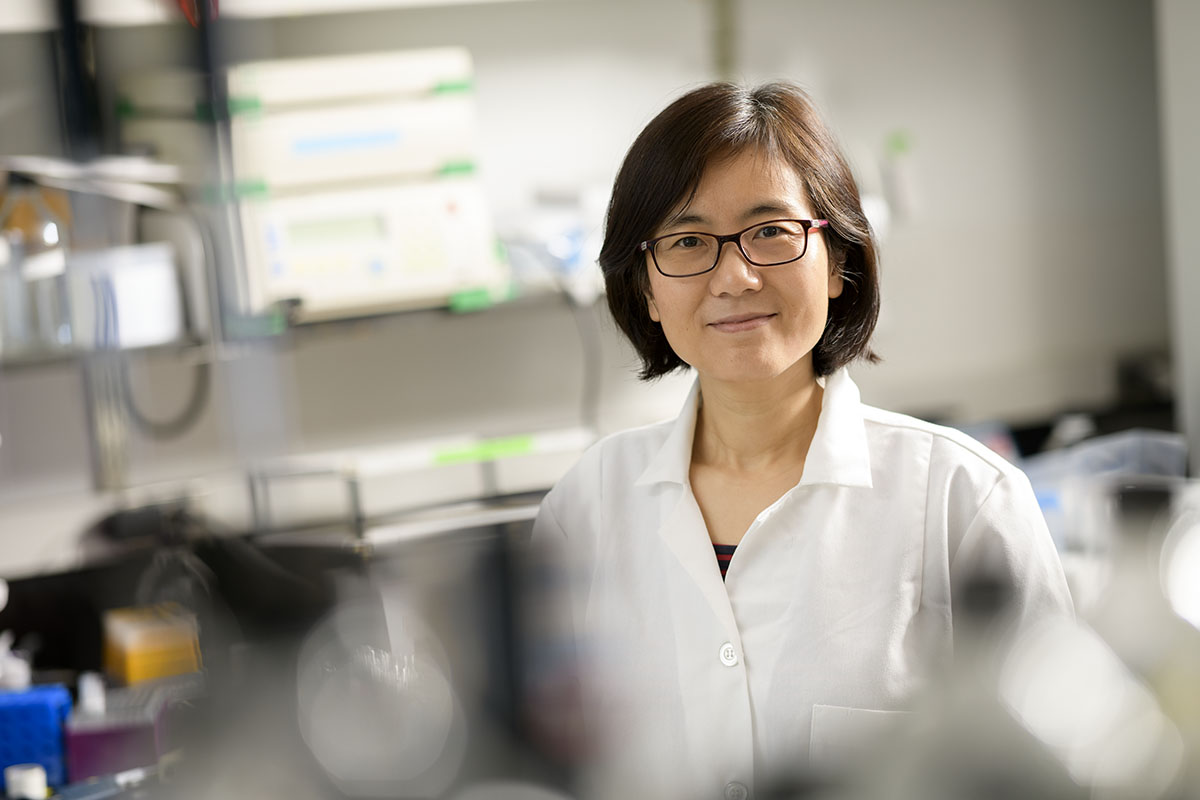Winter 2020
Mary Baylies
Development of human 3D skeletal muscle organoids
The development of human skeletal muscle is understudied, despite the importance of proper muscle function to health. This research deficit stems, in part, from limited availability of human embryonic materials, or to reliance on 2D invitro cell culture systems that fail to produce well organized and differentiated muscle cells. This project aims to build a human pluripotent stem cell-derived 3D muscle organoid platform, consisting of skeletal muscle cells, motoneurons, myofibroblasts, and resident satellite cells, that will allow the study of skeletal muscle development from embryonic to adult stages at unprecedented resolution.
Spring 2020

Mechanisms of selective lysosome membrane turnover and exosome formation
Lysosome organelles exert numerous functions that are critical for maintaining the health of cells and tissues, such as breaking down unwanted or dysfunctional proteins, and supporting immunity by degrading pathogenic organisms. Despite the importance of lysosomes for maintaining health, how lysosomes themselves are maintained in cells remains poorly understood. The proposed research will continue studies into a new activity we have identified that mediates the selective maintenance of lysosomes by controlling the size of individual organelles and mediating the degradation of selective portions of the lysosomal membrane.

Cellular responses to long-term phosphate starvation
Inorganic phosphate is an essential nutrient. Phosphate availability and cellular phosphate homeostasis are important issues in environmental health and human ecology. Cells from all domains of life respond to acute short-term phosphate starvation by inducing the transcription of phosphate acquisition genes. This project aims to explore the longer term cellular adaptive responses to phosphate starvation using fission yeast as a model system.
Fall 2019

Discovering developmental enhancers through systemic Interrogation
Spatiotemporal control of gene expression during embryonic development requires orchestrated activities of numerous enhancers. Proper activation of enhancers is critical not only for embryonic development, but also adult tissue homeostasis and regeneration; and inappropriate enhancer activity is often associated with pathological conditions such as cancer. Here we propose using mouse models to validate enhancers we recently identified using a new stem cell-based approach, and further developing new methods for large-scale functional interrogation of enhancer activities.

Probing the cell-autonomous fitness surveillance network
Unfit and yet viable cells are inevitably generated during animal development and growth. These viable unfit cells, if not removed, can compete with healthy cells for nutrients and space, generating sub-optimal tissues that negatively impact the health of animals. We aim to characterize a novel cell-intrinsic surveillance network that allows unfit cells to self-identify and self-destruct, a program ensuring animal fitness in a cell-autonomous manner.
Spring 2019

Isolation of Eukaryotic Replisome Complexes for Structural Analysis
Each time a cell divides it must produce accurate copies of its chromosomes to preserve the genetic information contained in the chromosomal DNA. This process, called DNA replication, is essential and defects in DNA replication can lead to the mutations and chromosomal rearrangements associated with developmental disorders and diseases, such as cancer. This project will generate novel assays and tools for the isolation and structural analysis of the large, multi-subunit, protein complexes mediating DNA replication in budding yeast cells to illuminate the mechanism of eukaryotic DNA replication.

Development of Novel Aspartate/Glutamate Cross-linking Reagents for XLMS
Cross-linking mass spectrometry (XLMS) has emerged as a powerful tool to study protein structure in situ and in live tissues. Many proteins contain carboxylic acids on their surfaces, but it is currently difficult to cross-link these acids efficiently. We propose to develop a novel chemical reagent to enable efficient cross-linking of these acidic residues for use in XLMS.

Intestinal Microbiota Damage and its Impact on the Kynurenine Pathway
The kynurenine pathway impacts major diseases such as major depressive disorder, Alzheimer’s, and cancer. Experiments in mice show that the gut microbiome modulates the kynurenine pathway, but the mechanism remains elusive. In this application we propose experiments where we damage the microbiota of mice using antibiotics, and use metabolomics to investigate the kynurenine pathway, together with computational analysis to determine how intestinal microbes impact the kynurenine metabolism.
